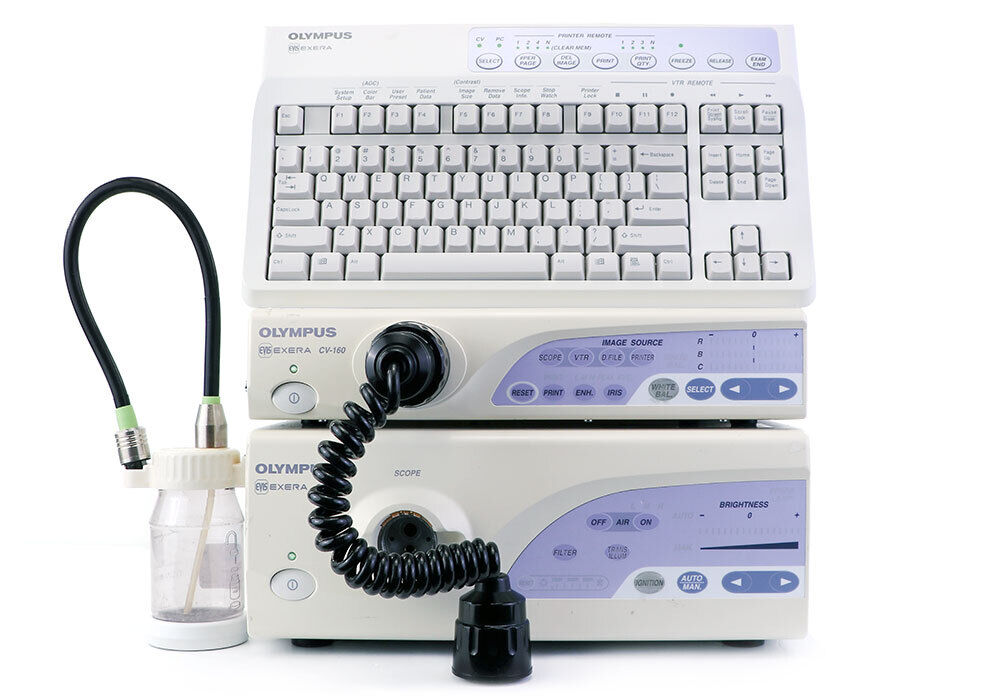Olympus 160

The Olympus System 160 refers to a medical-grade endoscopy system commonly used in gastrointestinal (GI) and respiratory diagnostics. It is part of the EVIS EXERA series of endoscopy systems by Olympus, renowned for its combination of high-quality imaging and ergonomic design, supporting various diagnostic and therapeutic procedures.
Key Components of the Olympus System 160:
Video Processor (Olympus CV-160):
- The video processor serves as the brain of the endoscopic system, capturing images from the endoscope and processing them into high-quality video output.
- The CV-160 offers enhanced image quality, making it easier to visualize mucosal details and detect small lesions.
- It features support for Narrow Band Imaging (NBI) technology, which enhances the visibility of blood vessels and fine tissue structures.
Light Source (Olympus CLV-160):
- The CLV-160 provides consistent illumination necessary for visualizing the inner surfaces of organs during procedures.
- It offers improved brightness and supports automatic brightness control to adjust lighting conditions based on the requirements of the examination.
Endoscopes:
- Various flexible endoscopes can be used with the system, including gastroscopes, colonoscopes, and bronchoscopes. These are typically equipped with a CCD (charge-coupled device) sensor to capture high-resolution images.
- Endoscopes in the 160 series are known for their wide field of view, improved angulation, and easy insertion capability.
Narrow Band Imaging (NBI):
- The Olympus 160 system includes NBI technology, which uses specific wavelengths of light to improve contrast and visualization of the mucosa and blood vessels, aiding in early detection of cancerous lesions.
User-Friendly Interface:
- The system offers a straightforward interface for clinicians, with easy-to-use controls, video capture capabilities, and high-quality video output for clear visualization during procedures.
Applications of the Olympus 160 System:
- Gastroenterology: Used for colonoscopies and gastroscopies to examine the digestive tract.
- Pulmonology: Utilized in bronchoscopies to visualize the airways and lungs.
- ENT (Ear, Nose, Throat): Applied for diagnostic procedures in ear, nose, and throat examinations.
This system is well-regarded for its balance of affordability, reliability, and solid performance in everyday clinical settings. Would you like more specific information on a component or procedure?